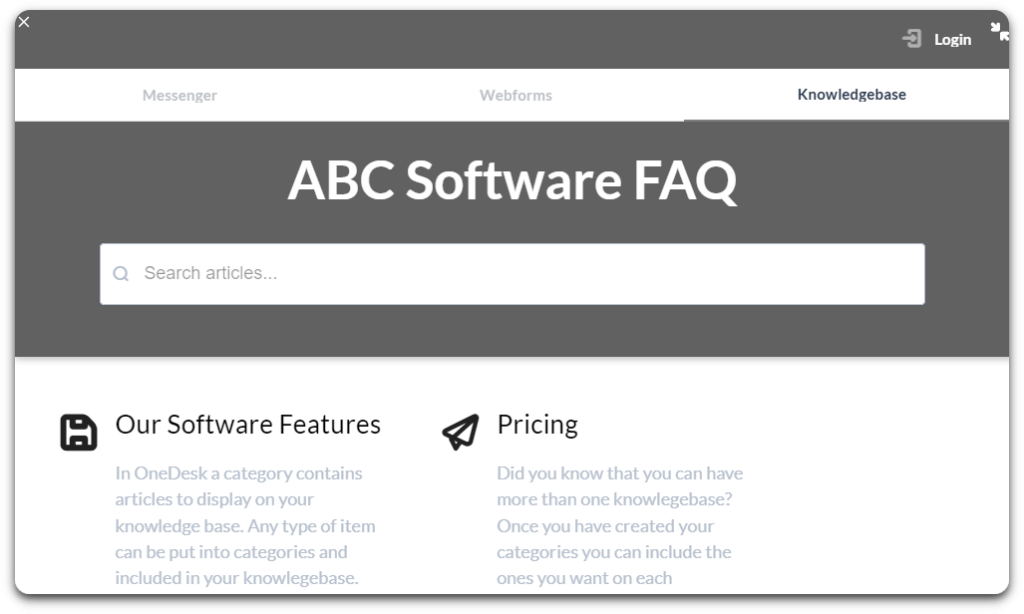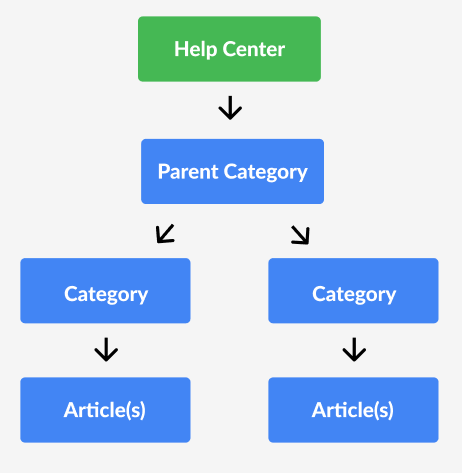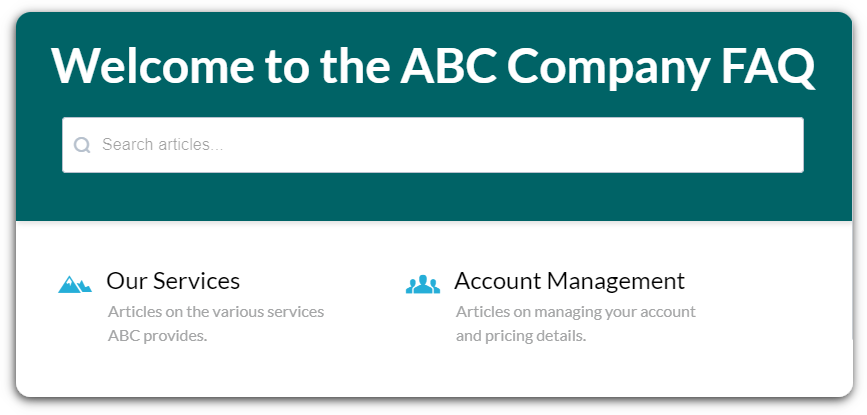A customer service knowledgebase is a hub of information for your customers. It is considered an essential self-service option for companies of any size or industry. A knowledgebase (KB) will include answers to common questions about your products or services. It might also include detailed guides on how to solve issues or perform actions. A KB can be a helpful tool from the agent perspective as well. For instance, agents can consult articles to provide accurate answers. Or, perhaps even more useful, agents can insert an article or link to an article when responding to a customer. In this way, an agent can provide detailed information when providing support. In today’s article we will cover in more detail how and why to implement a customer service knowledgebase.
What is a customer knowledgebase?
A knowledgebase, also called a help center, refers to a customer-facing self-service tool. It is a hub of helpful articles written by your team. Articles are typically organized into categories to aid findability. Customers can browse through categories and search articles to find the answers they need.
Benefits of a customer service knowledgebase
- Customer satisfaction -A knowledgebase can empower customers to find answers on their own. Often customers prefer to seek out answers on their own terms, as it is often a quick and flexible option. Providing these self-service options also demonstrates that you care for your customers.
- Cost and time saving – Without a knowledgebase, customers are left in the dark. If they can’t find answers, they either get frustrated or create a ticket (or multiple tickets!). On the other hand, with a knowledgebase, customers can help themselves and find answers on their own terms. Ultimately, a knowledgebase is an investment. It can reduce ticket volume as well as agents’ time spent answering questions.
- Scalability – Many knowledgebase softwares, like OneDesk, offer the ability to add new content, reconfigure your information architecture, or even create multiple knowledgebases. So, as your company grows and changes your knowledgebase grows too.
- 24/7 availability – Even outside of your business hours, customers can use the knowledgebase to resolve their issues. This aspect of a knowledgebase is essential for companies with a global customer base.

Use a customer knowledgebase software
By far the most effective way to implement a knowledgebase is to utilize a knowledgebase software. These tools provide various features to maintain, create, edit, and deploy a knowledgebase.
There are different kinds of KB software such as Wiki types, to WYSIWYG style tools, to KBs with a text editor style. There are benefits and advantages to each type of KB. For instance, some of the benefits of a text editor style KB is the ease of use. Anyone who has used a text editor like Word or Google Docs can pick it up and use it. On the other hand, these tools might have less options in terms of customizing the layout of articles.
Some KB software also include other self service or support tools, such as portal, email integration, or automated-replies. For instance, OneDesk is a full-featured software offering a suite of customer support features on top of a customer knowledgebase tool. The OneDesk knowledgebase offers a simple to use rich text editor style KB. It is easy for any team member to use. Simply type or paste text into the article details field. Then, format the text using the toolbar. You can style your KB to fit your brand with custom colors and logos.
Tips for creating a customer-facing knowledgebase
- Identify your common questions – Talk to your team! Likely your support team or anyone else in a customer-facing role already has an idea of what kinds of things your customers struggle with. Consider also going through old tickets or communications to identify common customer pain points.
- Create informative articles.
- Include all the necessary information the customer needs to understand the issue or complete the task. But do not over complicate things!
- Make sure your articles are well structured. If the topic is complex, break the article down into logical and organized steps. Breakup the content using whitespace, bullet points, or numbered lists. A structured article is much more readable and also easier to skim through, allowing customers to parse the information they need.
- Remember your audience! Who are your customers? For example, the average customer might need you to define technical terms or avoid jargon.
- Include images, videos, or attached files to aid in understanding and provide complete clarity.
- Define intuitive categories and organize your articles – Your categories contain your articles. Categories aid in browsability and findability of your articles. You should have enough categories to easily organize your articles but not to many as to overwhelm your customers.
How to: Create a customer knowledgebase in OneDesk
Create your categories and parent categories
First let’s explain a bit about the structure of the knowledgebase. The OneDesk customer service knowledgebase consists of parent categories, categories, and articles. Your customers browse through parent categories and categories to locate articles. (They can also use the built-in search feature :)). Parent categories are the highest level of organization. They contain your categories, but are optional. Use parent categories to provide more structure. Next are categories, which hold your articles. You’ll need to have a few categories.
Before you start, think about how you want to organize your articles. For example, if you are an educational institution, you might have categories such as ‘Admissions’, ‘Financing’, or ‘Programs’. Try to keep your categories and their names intuitive. Customers shouldn’t have to think too much in order to find what they need. Categories in OneDesk can always be renamed or reordered so it’s easy to change things over time.

Write and publish your articles
The next step to creating you knowledgebase is pretty important — creating your articles! Like categories, your articles can change over time. But start with a few important ones. These articles should include answers to your most common questions. Customers constantly asking how to reset their password? Sounds like a good candidate for a knowledgebase article. The OneDesk customer service knowledgebase offers the ability to create pretty robust articles. You can include images, videos, attachments, and of course text. It is a good idea to include resources like images or videos especially for more complex topics. Remember to use also formatting like whitespace, heading, and bulleted lists to keep your articles organized and readable.
Make your Knowledgebase accessible to customers
Lasty, and arguably the most important step, is making the knowledgebase accessible to your customers. After all, if your customers can’t find your knowledgebase, they won’t use it! One of the best practices when it comes to self service is to make your knowledgebase accessible from multiple locations. OneDesk is a pretty flexible and configurable and this includes how you implement your KB. OneDesk offers a web widget, which can be embedded to your site. The web widget appears as a bubble in the corner of your webpages. By opening the widget, customers can access the knowledgebase or other customer apps. The widget is one way to make you KB live and is one of the most easily-accessible means for a customer to find your knowledgebase. You can also provide customers a link to the knowledgebase. We recommend linking your customer service knowledgebase to your website navigation or email signature.

Try OneDesk free for 14 days. No credit card required.